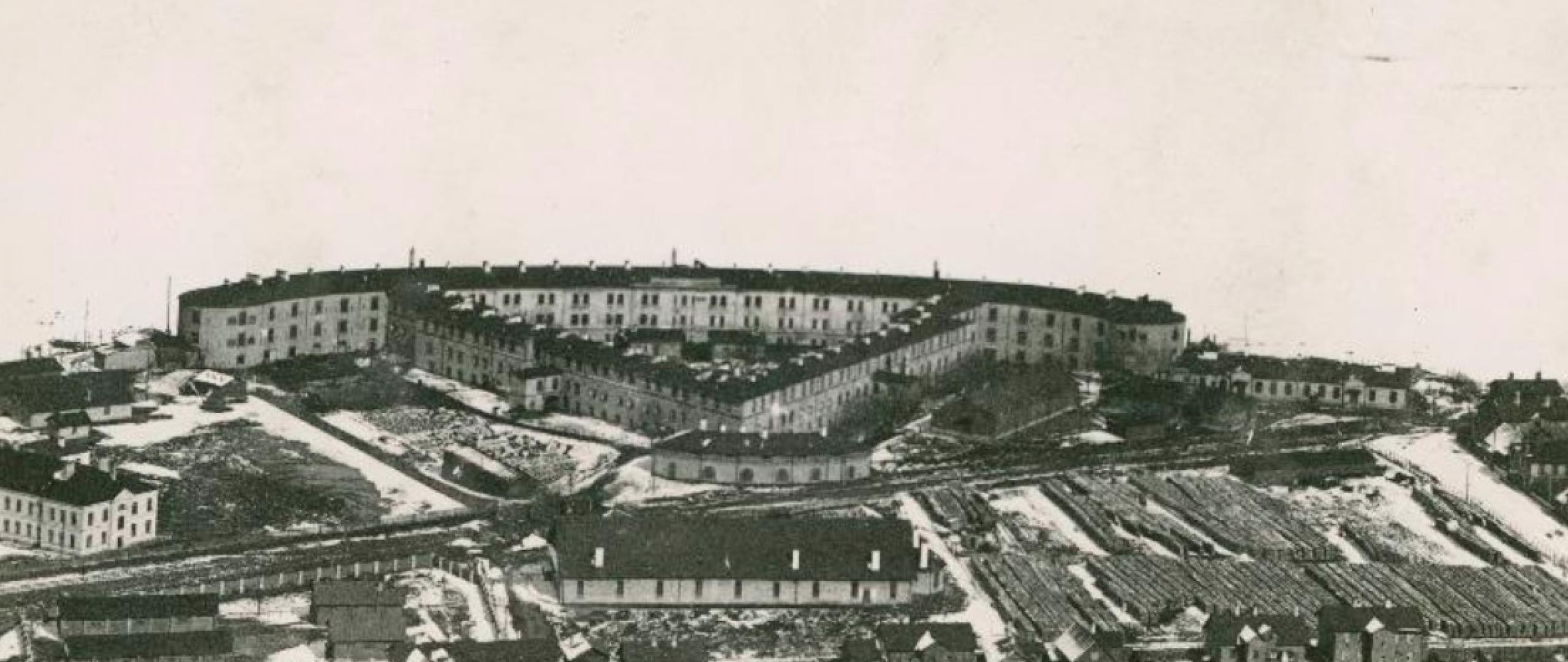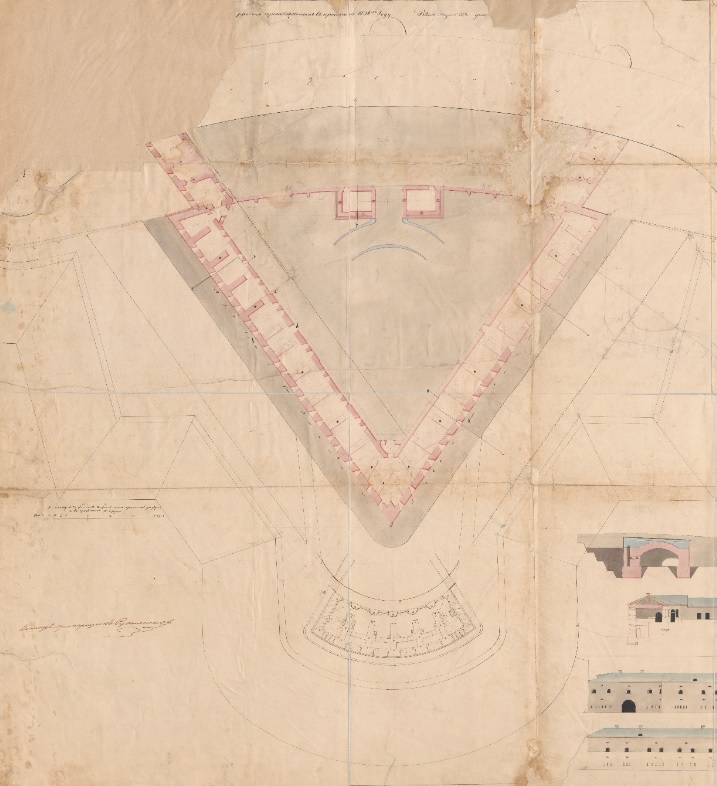Patarei as a military base (1830s -1917)

The planning and construction of the modern Patarei complex started by the orders of Russian emperor Nicholas I in 1827. The objective of the Tallinn Sea Fortress was to protect the capital of the Russian Empire, St. Petersburg.
The main part of the fortress is a nearly 250 metre long and curved three-storey building (gorge) facing the sea (the roadstead of Tallinn), which was designed for the placement of cannons. Two more than 100-metre long one- and two-storey wings (lunettes) stretch inland from the gorge, forming a sextant-shaped floor plan. Back in the day, the entire complex was also surrounded by a moat.

The floors of the sea fortress consisted of battle chambers (casemates) that extended through the building. Embrasures for cannons and guns were placed in its exterior walls along with vent outlets for gunpowder smoke.
Each floor of the three-storey building contained 24 large vaulted chambers, and every chamber fit two cannons. Including smaller sector-shaped end chambers, the fort was equipped with nearly 200 cannons. During peacetime, roomy archways connected the casemates that were used as soldiers’ lodgings. On the sea-facing side, three half-towers protrude from the wall. These towers were intended for delivering flanking fire.
The ground floor of the lunette was designated for different workshops and auxiliary rooms while the first floor was meant for officers. The lunette was originally hidden behind moats and barriers. The secluded courtyard, concealed with high walls, formed an unusual atrium, where one could garden and tend to flowers during peacetime. During construction, it was decided to add an artillery battery in front of the tip of the lunette, in order to strengthen the fort’s protection from the landward side.
The complex was ceremonially opened in 1840, but the construction continued in the following years as well, especially after the start of the Crimean War in 1853. Although Russia’s yet another war with Turkey seems remote at first glance, it nevertheless affected life in the Baltic Sea.
Namely, both France and England participated in the war as Turkey’s allies. Russia feared that the fleets of France and England will attack St. Petersburg. In February 1854, a state of war was declared in Tallinn and most of the wooden houses in Kalamaja suburb were burned down in fear of a siege. Due to the war, many extensions were added to Patarei in 1854 and 1855: an open defensive platform with a brick parapet was added to the one-storey limestone building, an entrenchment was constructed and the artillery battery was partially rebuilt.
The English and French navy did turn up at Tallinn’s roadstead and subsequently seized the island Naissaar. However, no great battle ever broke out. The cannons made only a few shots, because for most of the war, the invaders kept hiding behind the island. The mutual ambush lasted until the end of the war in 1856.
Russia was beat in the Crimean War. Already in 1858, Tallinn was removed from Russian Empire’s list of land fortifications due to the defeat and the fast development of military technology. The gorge’s cannon embrasures were converted to windows and the entire fortress became a casern (military barracks).
The entrenchments were transformed to public green areas. It was a massive casern for a large number of military personnel. In 1881, Patarei housed 2134 men. After the completion of the second floor lunette extension in 1892, an additional 640 men moved in.
On the second half of the 19th century, Patarei was officially named a defensive casern (oboronitelnaya kazarma) according to the Russian military terminology of the time. The German name West Battery (die Westbatterie) was also used, as there were several batteries defending Tallinn at the time and Patarei was situated at the west part of the city.
By the end of the 19th century, the name Patarei (Batarei) casern(s) (Batareinaya kazarma, Westbatterie kaserne) had become the most widely used term for the place. Patarei was used as a casern until the fall of the Russian Empire and the creation of the Republic of Estonia. During the Estonian War of Independence, the young republic used the complex as a military hospital.